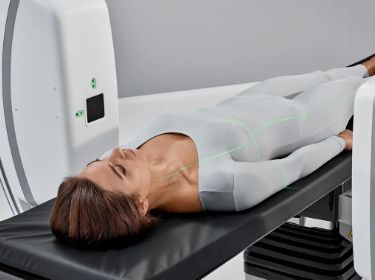Our Doctors
Meet all the doctors from Cleveland Clinic Abu Dhabi.
View Doctors

Thanks to a number of technological advances in recent years, head and neck surgery has drastically changed, with even the most complex and intricate cases offering more precision, improved safety, faster recovery and improved patient outcomes.
Technological innovations have transformed the landscape of these complex procedures. From robotic surgery systems to advanced imaging technologies, the availability of medical equipment to head and neck surgeons continues to evolve, making more and more surgeries possible and enhancing patient care.
The most significant technological advances that have helped to shape the field of head and neck surgery include:
Robotic surgery have transformed the way that surgeons can carry out complex head and neck surgical procedures.
The state-of-the-art systems offer many benefits to patients including unparalleled precision, control and flexibility. The systems don’t replace the role of the surgeon but enhance their skills allowing them to navigate intricate anatomical structures with enhanced dexterity.
The robotic system acts as an extension of the surgeon. Surgical instruments are controlled using robotic arms, guided via a control system. The system supports a degree of precision that would not be possible with human hands alone.
Operating through tiny incisions, robotic-assisted procedures minimize trauma to surrounding tissues, leading to quicker recovery times and reduced scarring for patients. The less invasive procedure also supports less pain, less blood loss, less risk of infection and a reduced risk of complication.
When integrated with advanced imaging and real-time feedback mechanisms, surgical accuracy can be increased further, paving the way for safer and more effective interventions.
To learn more about the availability of robotic surgery at Cleveland Clinic Abu Dhabi, click here.
Intraoperative imaging systems and nerve monitoring technologies provide surgeons with invaluable real-time information during complex head and neck surgical procedures.
The system provides high-resolution imaging and precise navigation capabilities, which allow surgeons to visualize critical structures, empowering them to make informed decisions.
The introduction of intraoperative imaging systems has been particularly crucial in skull base and spinal surgeries, where accuracy to the nearest millimeter is imperative. By providing a 360-degree view of the surgical field, surgeons can confidently maneuver around delicate anatomical landmarks, minimizing the potential for complications and ensuring optimal patient safety.
The system is helping surgeons to minimize and mitigate risks whilst optimizing surgical outcomes for patients.
Microvascular reconstruction is a technique used to reconstruct head and neck tissues after cancer surgery. It involves transplanting tissue from another part of the body to the head and neck area, requiring the reattachment of tiny blood vessels under the microscope.
Microvascular reconstruction is a cornerstone of reconstructive head and neck surgery, and the procedure requires exceptional precision and skill due to the intricacy of attaching such tiny blood vessels. Thanks to recent advancements in microsurgical instruments, the procedure has been revolutionized. The advanced instruments have equipped surgeons with tools that support an enhanced level of dexterity and accuracy.
Advanced microvascular instruments also facilitate delicate tissue dissection, transfer, and vascular anastomosis, essential for successful free flap reconstructions following tumor resection.
With improved efficiency and reliability of microvascular procedures, advanced instruments have contributed to better functional outcomes and higher success rates of head and neck surgeries, enhancing patient satisfaction and quality of life.
High-definition endoscopic systems have significantly improved the visualization of hard-to-reach areas of the body, including the head and neck region.
The endoscopic systems, which can deliver still or video images, provide a clear, magnified view of the surgical field. This enables surgeons to perform minimally invasive procedures with greater precision and confidence.
The systems can be used in complex head and neck surgeries such as tumor removal, ensuring healthy tissues are spared, or during the correction of anatomical abnormalities. With enhanced visualization, surgical accuracy is enhanced whilst trauma to surrounding tissues is minimized. As a result, patients experience reduced postoperative pain, shorter hospital stays, and faster recovery times.
Innovative medical equipment is having a profound impact on patient care. Advancements in technology are redefining the standard of care for patients requiring complex head and neck surgery, offering unprecedented levels of precision and safety, and ensuring better outcomes and quality of life for patients.
© Copyright 2024 Cleveland Clinic Abu Dhabi. All rights reserved.
This page has been reviewed by a medical professional from Cleveland Clinic Abu Dhabi. Information on this page is not intended to replace the medical advice of your doctor or health care provider. Please consult your health care provider for advice about a specific medical condition.
Learn more about our editorial process here.
We’re here to make managing your healthcare easier.